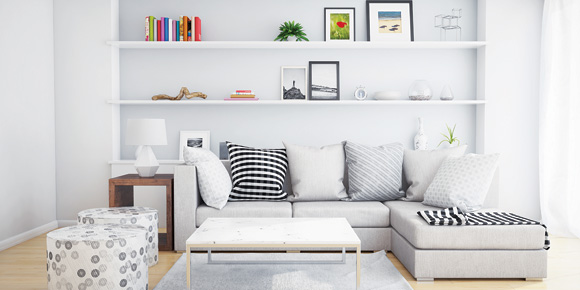Any design project starts with good planning. We want spaces that look great and work well for us. To achieve a fabulous space, we need to identify what isn’t working in the space. We need to plan for how we want the space to work as well as how we want it to look. There are certain steps that we follow to arrive at a final design. Let’s go through the basics of planning a great space.
One of the first steps is to identify what isn’t working in the space? Is it dated and unappealing? Is it a small space that functionally doesn’t work well? Is it too cluttered? Do you enjoy spending time in the space? Could the furniture placement or scale of the furniture make the space more user friendly? What, if anything, do you like about the space? What do you want to use the space for? Is there adequate room for this purpose? What does work for you in the space that you would like to keep? Once you have identified what works well, what you need it to do, and what doesn’t work, you are ready to get to work.
Your priorities
I typically ask my clients to make a list. Top priority is the must have list. What do you want that is non-negotiable? Next, what are some of the secondary wishes? What would you like the space to do for you? Finally, what is on your could list? What would you do if we could based on budget and functionality. Once we have the priorities finalized, we need to determine the budget.
Your budget
Your budget is a critical aspect of any project and tells your professionals exactly what we can and cannot do. We are accustomed to working with a budget. However, we need a firm budget in order to start planning a project. I am always surprised when I ask someone their budget and they respond with “as little as possible”. The best way for us to give you the space you need is to have a budget in mind — if it is not realistic, we will let you know. We are trained to stretch an existing dollar to maximize your design.
The best way a professional can help you achieve your desired project is to be aware of the budget from the start to best help allocate your budget according to your top priorities.
Your style
I always ask clients to give me pictures or magazine clippings of the style they are trying to achieve. I learned early on that someone’s interpretation of “contemporary” could actually be closer to “mid-century modern.” Just because some says they like a certain style — I want to see visually what they are referring to. More often than not, I have found using pictures has actually illustrated that a clients’ preferences were a blend of more than one style, sometimes a style they were not even aware they had a preference for.
The best way for me to give them the look they want, was to see what they like. Once we’ve determined what they like, the next step is to ensure we can incorporate it with the existing architecture and style of the home. If someone has a turn of the century home and wants a complete contemporary look — it can be achieved but it will take a lot more work than it would staying true to the existing architecture and style. This needs to be discussed and options provided so the client can make well informed decisions.
Your plan
Once we have the functionality, budget and style finalized, we work on the space planning. Are we working within the existing space or are we taking down walls to make the space larger and more functional? Do we need to move electrical, plumbing, vents, or add structural support to achieve the desired design? What is the most cost-effective path to achieving our goals?
Does our plan require any permits? As a Home Owner, it is your responsibility to ensure permits are in place for any required work. Call the City at 311 to determine if your project requires a permit and ensure your Contractor has these permits in place.
If your Contractor doesn’t want to pull permits, find a new Contractor. Permits are there to protect you and ensure the work is done correctly. Space planning is critical to the overall success of a project. Building codes ensure we follow minimal standards for fire safety. However, it is equally important to think about the actual use of the space. Where do you need to stand to open the fridge? Or the dishwasher? Do you have adequate room to use the space comfortably?
Your finishes
Finally, your finishes, colours, furniture, fixtures are the fun part of any design. This is typically where most people enjoy themselves the most! This is where the final selections really complete the design. However, it is also the part that takes the least amount of planning. The only real limitation here is your budget and creativity. However, the basics of your design must be well planned.
No matter how expensive or fabulous your finishing selections are, if the space doesn’t work well for you or blend well with the rest of your home, you will never be completely satisfied with your renovation. So take the time to plan well to make the most of your space and renovation dollars.



